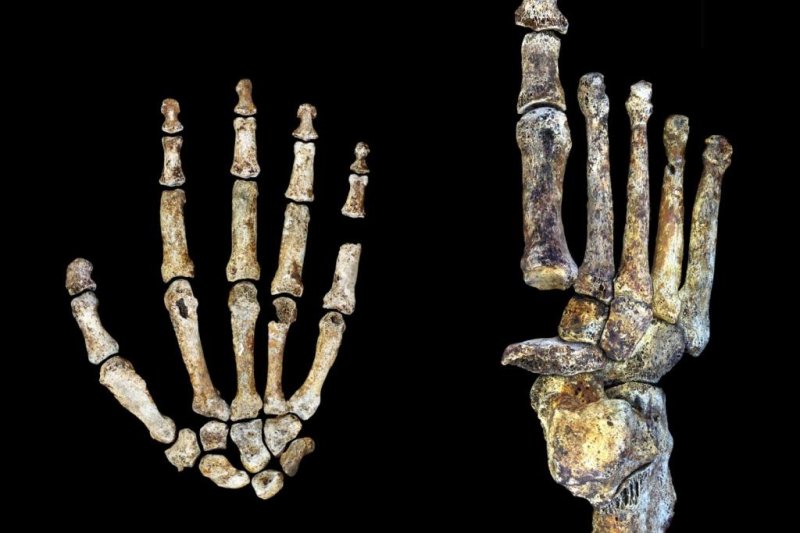The hand and foot of Homo naledi. Photo by Peter Schmid and William Harcourt-Smith/Wits University
KENT, England, Oct. 6 (UPI) -- Two new studies, published this week in the journal Nature Communications, detail the hand and foot of Homo naledi, the human ancestor species recently unearthed in South Africa.
Upon close examination, the structure and function of the species' hand and foot suggest Homo naledi was uniquely adapted to both tree climbing and bipedal walking, confirming the significance of Homo naledi as a transitional species in humans' evolutionary journey from the tree to the ground.
Though the ancient foot features primate-like curved toe bones (proximal phalanges), it in many ways resembles a modern human foot -- well suited to standing and walking on two feet.
"It was a striding long-distance traveler with an arched foot and a non-grasping big toe with subtle differences from humans today in having somewhat more curved toes and a reduced arch," Jeremy DeSilva, an anthropologist at Dartmouth University and a specialist in fossil feet, said in a press release.
DeSilva is one of several co-authors of the new study on H. naledi's foot.
"It looks like what the foot of Homo erectus might look like," DeSilva added. "H. erectus is the earliest human with body proportions similar to our own, with long legs, short arms. It might be closely related to H. erectus, but the brain is smaller and it has a Lucy-like shoulder with curved fingers. This is a new combination that we haven't seen before."
H. naledi's hand is perhaps even more unique, revealing a combination of primate and early human anatomy. The wrist and thumb resemble those of Neanderthals and early humans, offering H. Naledi the dexterity and grasping power necessary to manipulate tools. But the species' fingers are much more curved than other other early human species, like Australopithecus afarensis, suggesting H. Naledi could still climb trees with relative ease.
"The tool-using features of the H. naledi hand in combination with its small brain size has interesting implications for what cognitive requirements might be needed to make and use tools, and, depending on the age of these fossils, who might have made the stone tools that we find in South Africa," said Tracy Kivell, an anthropologist at the University of Kent and lead author of the new study on H. naledi's hand.
Taken together, the studies present H. naledi as an example of anatomical decoupling among early human ancestors, as upper and lower limb function began to evolve in new and different ways.















